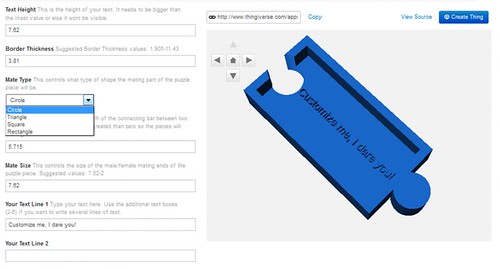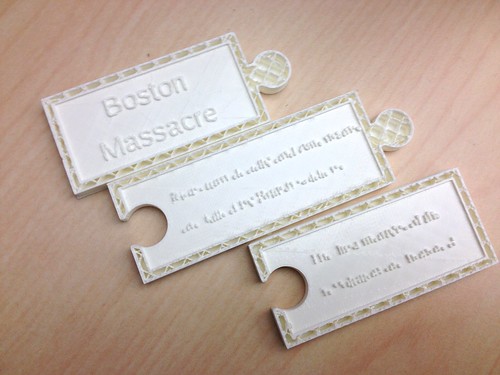Sat down the other day with student Alex Hartigan (he of the Calculus III models) to talk about designing an OpenSCAD version of Gena Estep’s (Professor of History) History game tiles. After talking it through, Alex went off and did an incredible job creating a very flexible version of the model that can be configured in lots of ways in the Thingiverse Customizer. Alex is the kind of student who doesn’t do things half way, and so of course he created four different possible “Mate Types” for connecting the various pieces.
As with most things, version one needed a little tweaking. Specifically, as is often the case in digital fabrication, size and scale needed to be worked out, and Alex was able to quickly adjust the default sizes of the text and other elements so that they were more likely to print successfully without a bunch of post processing.
This project is one model of the kind of faculty/student collaboration I’m trying to foster. Too often good ideas never see the light of day because of assorted limitations, be they time or resources or skills. In this example, Gena had a great idea, and Alex was able to bring that idea to life in a way that enables relatively easy production. To close the loop, Gena has found a student who is interested in doing the work in Thingiverse to configure and download the various game pieces and print them. It’s my hope that the relationships we’ve been building between the Innovation Center and especially interested students – from the Math & Engineering Club for instance, and the Data Science Club and Science Center – will lead to many more examples of these kinds of projects and partnerships.




Pingback: Making is About Relationships – FLC Innovation
An example of student/faculty partnership in higher ed making. https://t.co/83tFosOSri #makered #makingacrossthecurriculum
Pingback: FLC Feminist Alliance Stencil – FLC Innovation